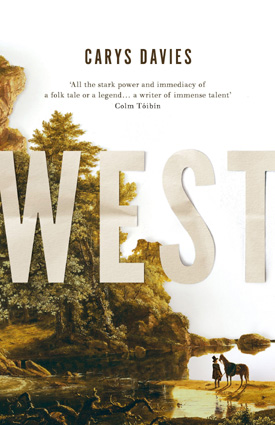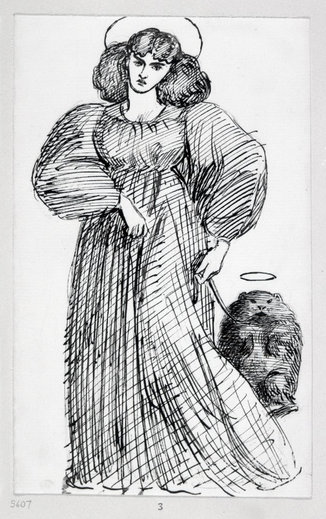I don't often read biographies but when I saw that Matthew Sturgis' recent book on Oscar Wilde has been shortlisted for this year's prestigious Wolfson History Prize I thought this would be a great opportunity to learn more about Wilde's life. Sturgis' extensive biography is deliciously comprehensive and draws upon a lot of recent research and untapped material about Wilde to give a really authoritative, well-rounded understanding of this infamous, irresistibly flamboyant and brilliant writer. I've previously read Wilde's most famous fiction as well as several of his plays (I even acted in a production of Lady Windermere's Fan) but I knew little about the trajectory of his life. I was only aware that he was a famous wit whose health and success went into sharp decline after he was tried and imprisoned for gross indecency with men. For instance, Rupert Everett's recent film 'The Happy Prince' is a really sympathetic depiction of the melancholy later years of Wilde's life. Sturgis documents in detail Wilde's family life and many social connections, his rise to fame and the gradual formation of his writing craft, the way his aesthetic principles connected to the expression of his sexuality and, of course, Wilde's tragic downfall from social darling to condemned sodomite. In doing so he has created a masterful portrait of Wilde capturing the rare flame of his brilliance and the gross injustice of his persecution.
In 2017 I went to an exhibit at the Tate Britain on the subject of 'Queer British Art' and within the gallery hung the large door from Wilde's prison cell. To be confronted with the ugly impenetrable barrier to the artist's freedom was quite moving and brought home the reality of his situation. One could think seeing such a brutal object that this was Wilde's inevitable fate. The challenge of biographies is to present the history of a life while showing that circumstance and coincidence determined what happened to this individual (rather than fate.) This biography begins with a scandalous and much publicised sex trial – but it was for Wilde's father and not Oscar himself. Wilde's father was a doctor accused of inappropriate behaviour with his client. He was exonerated of the charges (partly because of his very respected social position) even though he was certainly a philanderer who fathered a number of illegitimate children. This was sadly not the case with Oscar many years later whose sexual activity happened to be deemed socially unacceptable and so he met severe punishment. Sturgis draws this contrast in a meaningful way.
It's fascinating and surprising to read about Wilde's early life as a rambunctious sporty child in Ireland. I would have assumed that his mannered sense of being was inborn but it appears that (though it was certainly heartfelt) it was a way of presenting himself as one of the leaders of the aestheticism. This was a movement which focused on the aesthetic values rather than political or moral content of literature and art objects. The often flamboyant dress code and posturing which coincided with this was one which periodicals delighted in parodying. It was so interesting to learn how Wilde played into this by connecting himself to such depictions and self-consciously crafted a way of presenting himself in order to achieve fame. And what was especially curious was that Wilde obtained such a level of fame before he'd even published much. I was previously aware that he embarked on extensive lecture tours across America and the United Kingdom, but I assumed that he only did so after the fame of his plays. However, it was quite the reverse. He fervently attempted and failed to get plays produced while simultaneously filling theatres with patrons eager to hear his witticisms about an aesthetic's decorum and manner. This biography taught me what a struggle Wilde had achieving literary success even though he was clearly ferociously intelligent and funny; it just took time for him to learn how to harness this into an art form which would pay his considerable bills.
Certainly not everyone agreed with Wilde's values and dandy persona. His opinions ran counter to the beliefs of the times so naturally earned him a lot of scorn – as did the petty vengeance which comes within small art circles. But no one could deny Wilde's entertaining style of delivery so it firmly fixed him in the public eye. It was interesting to learn in Sturgis' biography how Wilde attempted to embark in a number of professions before earning money from his own writing. For instance, he reviewed books but hilariously Wilde didn't believe it was necessary or even appropriate to read the entire book he was reviewing. No doubt this position stemmed more from his reluctance to spend so much time on these books.
It's difficult to imagine how Wilde could be extracted from his famous public persona which persists today in legend and the many photos taken of him in elaborate garb. For instance, actor Ezra Miller cites Wilde as one of his style icons. Perhaps Wilde wouldn't have developed his literary talents without this way of presenting himself (as well as indulging in his excessive lifestyle), but it meant that though he was a great genius his literary output was relatively low. The time he hit his stride having a number of very successful plays produced was also the time that he became most entangled with Lord Douglas (Bosie). Because Bosie's father so viciously harassed Wilde and Bosie to end their relationship the couple attempted to sue him for libel and lost. This also unfortunately meant that the testimonies from that trial led to Wilde's own persecution and incarceration. Sturgis' biography details how this end perhaps wasn't inevitable. Of course, the primary cause of his downfall was the prejudice of the time and this paired with Wilde's inflexibility about being who he was and living how he wanted led to his ruin. Wilde should be celebrated for pursing his desires and bravely standing in the face of such condemnation, but it sadly meant that his life was cut short and curtailed his literary output. Sturgis' impressive biography elucidates this struggle in a meaningful and memorable way.






























